Uncover Bordeaux's vibrant flavors and culinary gems with our expert guides. Plan an unforgettable trip now!
Read more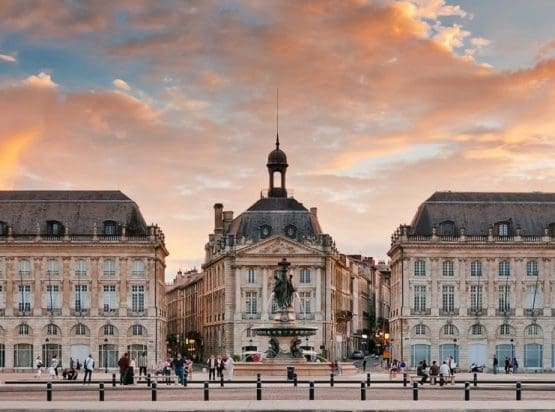
EXPLORE ALL OUR BORDEAUX WINE REGIONS GUIDE
Last updated: April 4, 2025
Pomerol is something of an anomaly in the Bordeaux hierarchy of venerable wine regions. While the Medoc and St-Emilion place much value and emphasis on their classification system, Pomerol has always gotten by without one. Moreover, there is no long tradition of large estates in Bordeaux’s most enigmatic and beguiling appellation; châteaux are small family affairs subject to change as individuals come and go.
Yet its sought-after wines can fetch a higher price than the much larger First Growths of the Medoc, and an astonishing number of boutique properties for an area no bigger than St-Julien is widely agreed to be among the best in Bordeaux.
Its renown is based on Bordeaux’s gentlest, richest, most velvety, and hedonistic red wine – white grapes are not permitted in Pomerol, although white styles were made well into the 19th century. Merlot is the predominant grape variety, with Cabernet Franc playing a supporting role. Good Pomerols have deep color without the marked acidity and tannin that often go with it, ripe-plummy, even creamy smell, and sometimes a great concentration of all their qualities: the essence of great red. Pomerol is a wine for the hedonists among you. Its sensual charms are irresistible.
Discover More About French Wine
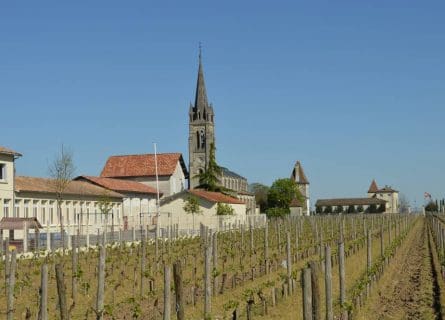
Unlike the appellations of the Left Bank, Pomerol was a relatively latecomer to the world of fine wine. We know, however, that the Romans conquered Aquitaine in the last century BC, planting vines near the settlement. Over time, vineyards proliferated south of Bordeaux, occupying a region known today as Graves. There is also evidence of Roman settlements on the Right Bank of the Dordogne, and yet no historian is certain that vines were cultivated during the ancient period.
Nevertheless, the Romans controlled Gaul (France) for over four centuries, maintaining an iron grip over political, cultural, and economic affairs. But in the 5th century AD, arrogance allied with decadence conspired to weaken the Western Roman Empire to the point of anarchy.
In the chaotic aftermath, the Visigoths attempted to conquer erstwhile Roman territories in France; however, they were pushed into Spain by the superior forces of the Frankish armies.
The Medieval Origins and Renaissance of Pomerol’s Vineyards
Little is known of Pomerol’s history during the so-called Dark Ages. Yet it is widely believed that vines were first planted in Pomerol in the 11th century; Eleanor of Aquitaine’s marriage to Henry II of England in 1152 was highly fortuitous for Bordeaux’s wine producers and merchants.
Trading on very favorable terms, the wines of Bordeaux soon found a willing audience in the English Court. Meanwhile, English merchants founded the city of Libourne in 1270, bringing more renown to the vineyards of the Right Bank.
Pomerol also benefited from its position along the famous pilgrimage route of Santiago de Compostela, attracting the interest of returning knights from the crusade. Several hospitals and hotels were built in the 13th century, including one that stood where Chateau Gazin is located today. By the 1400s, the pilgrimage route was in decline, but the knights stayed to replanted vineyards destroyed during the Hundred Years War.
In the 16th and 17th centuries, Dutch merchants pulled Bordeaux’s commercial strings. Many of their customers demanded white wines, and red styles remained on the fringes for over three hundred years. For example, the owner of Chateau Rouget did not possess a single red vine until 1760.
By the late 18th century, a substantial proportion of Pomerol’s land was dedicated to viticulture. Yet many small farms maintained a tradition of polyculture – including maize and wheat – until the early 1900s. A milestone was reached in that century: white grape varieties were banned from Pomerol in 1936.
The Moueix Family and the Rise of Pomerol
Still, Pomerol took a long time to win over the hearts and minds of Europe’s connoisseurs. One man in particular is credited with establishing its modern reputation, and that man is Jean-Pierre Moueix. Born into a wealthy Bordeaux dynasty of winemakers, Moueix looked to the smaller port of Libourne for inspiration, as the Bordeaux negociants displayed an intractable bias toward the Left Bank.
However, he built a loyal client base in Belgium and expanded by buying or leasing additional estates. His son Christian has followed in his father’s footsteps, elevating Pomerol to the first division where it belongs. This family continues to set standards of excellence – and consistency – that others try to emulate. Fortunately for us, they usually succeed.
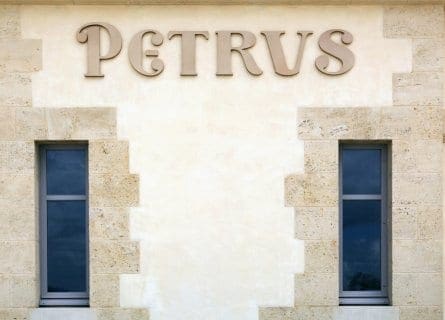
Pomerol has become one of the world’s most iconic wine regions. Just over 800 hectares are planted here, on a flat gravel bank bordered by St-Emilion to the east and Libourne to the west. Awarded AOC (Appellation d’Origine Contrôlée) status in 1936, Pomerol boasts exceptional soils for producing fine red wines.
Meanwhile, the climate displays maritime and continental influences, with most rainfall occurring in the spring. However, Pomerol can usually depend upon a warm and dry summer season, lasting from June to September. Merlot and Cabernet Franc yield incredible perfume, structure, and finesse wines in such conditions.
The Unassuming Charm of Pomerol
Yet visitors to the region are often disappointed; Pomerol is such a curious corner of the world that it invokes Gertrude Stein’s famous observation: “There is no there-there.” It lacks a beating heart – there is no actual village center, and almost identical small roads crisscross the plateau, apparently at random. The landscape is evenly dotted with modest houses – each rejoicing in the name of Chateau, although they are a world apart from the stately mansions of the Medoc. This is Pomerol – there is nothing more to see.
A Geologic Tapestry
The terroir, on the other hand, is extraordinary indeed. It is also very varied, with a good deal of sand and gravel and the legendary iron-rich clay of the plateau, known as the crasse de fer. Indeed, geologically, it is another big gravel bank, slightly rising and falling but remarkably flat overall. Towards the Libourne, the soil tends to be sandy, while to the east and north, where it meets St-Emilion, it is often enriched with clay. The finest estates, such as Petrus, La Conseillante, L’Evangile, and Lafleur-Petrus, are tightly grouped together on the clay plateau and make the densest, fleshiest, and most opulent wines.
From Opulence to Elegance
In contrast, Chateau de Salles produces a totally different but just as worthy style of Pomerol – lighter and fragrant, but without the density of estates like Bon Pasteur. Many view Pomerol as a homogeneous region, making homogeneous wine. Nothing could be further from the truth: Le Pin’s hedonistic opulence has little in common with the more subtle charms of Chateau Ferrand. But, you won’t find a drop of white wine here; that was outlawed in 1936 when the appellation was created.
Over 120 producers (no cooperatives) make wine here. Some oenophiles prefer these fruit-forward, rich, and velvety reds to the more austere expressions of the Left Bank. Indeed, what unifies Pomerol’s wines is their approachability—these opulent reds can be enjoyed at a relatively young age.
The chief grape here is not the tough-skinned Cabernet Sauvignon, whose wine has to live through a tannic and often austere youth; it is Cabernet’s traditional blending partner, Merlot. However, although Pomerol is now widely associated with Merlot, it only assumed a role of dominance in the mid-20th century. Records suggest that in the 1500s, Cabernet Franc, under the ancient name Vidure, was far more widespread than any other red grape in Pomerol; Merlot did not arrive until the 18th century.
The Frost of 1956 and the Rise of Merlot
Then, a devastating spring frost in 1956 encouraged growers to replace their Cabernet Franc vines with Merlot, partly because the latter offers a higher yield and ripens sooner. Occasionally, you will come across a Pomerol wine that is 100% Merlot: Petrus and Le Pin are the two most famous (and costly) examples.
But many more producers reject the paradigm of mono-varietal wines. Their reasons, of course, vary considerably. However, many will argue that Cabernet Franc adds much-needed finesse and aromatics to the blend and that Merlot can be too one-dimensional without a dose of Cabernet Franc. That is certainly open to debate, but it is a plain fact that Merlot delivers larger berries than Cabernet Franc, with thinner skins.
The resulting wine is often silky and seductive, yet it can lack ‘bite.’ Therefore, Cabernet Franc’s structure, acidity, and perfume are highly prized commodities in Pomerol, albeit not every winemaker uses the grape.
Winemaking Techniques
Meanwhile, approaches to winemaking in the appellation do not vary significantly: maturation in wood is considered de rigueur, and a percentage of it will typically be new. Leading chateaux use only hand-harvested grapes, fermented using traditional pump-overs in a mixture of stainless steel and concrete vats.
Yet attitudes to harvest dates are a subject of significant disagreement in Pomerol. One approach, popular at the Moueix chateaux, is to pick relatively early to emphasize freshness and balance in the wines; other properties, such as Bon Pasteur, favor a late harvest in October to produce fleshly and opulent reds with glossy tannins. It is said that great wines like Latour should not be opened until they’re at least 15 years old.
Not so in Pomerol; some of the best wines, made in the image of Parker and Michel Rolland, have revealed all their perfume and achieved dazzling finesse within a dozen years, and many are already attractive at five years old. For impatient oenophiles, that is worth its weight in gold.
Pomerol doesn’t play by Bordeaux’s rules or any rules except its own. But this isn’t simply a case of churlish rebellion: negociants were content to marginalize the region in the 19th century, while Left Bank châteaux received favorable terms. As a result, Pomerol had to forge its own path and make its own rules.
Rejecting Hierarchical Classification
Yet, compared to the Medoc and St-Emilion, there is a distinct lack of hierarchical order in the vineyards of Pomerol. Indeed, while the 1855 classification is regarded as a seminal achievement in the Left Bank, Pomerol has always rejected the notion of a codified ranking. Some winemakers have argued that historical opposition was driven by smaller, lazier growers in the appellation, unwilling to have the inferiority of their wines signposted in a bureaucratic ‘flogging.’
But regardless of the ultimate motivation, a lack of classification has not tarnished Pomerol’s reputation. Quite the opposite: Petrus and Le Pin sell for thousands of dollars a bottle. Thus, leading châteaux never worry about marketing their wines. They will sell out in every vintage at almost any price.
Nevertheless, Pomerol, unlike St-Emilion, has never embraced the idea of luxury tourism. There are exceptions, of course, and connoisseurs are welcomed to the finest properties to learn and to taste. But visitors should not expect to encounter a Gallic version of Stellenbosch or Mendoza; their absence makes hotels, restaurants, and tasting rooms noticeable.
Absence of Collective Marketing
There is also a culture of rampant individualism in this part of Bordeaux. Indeed, there is little to unite Pomerol’s diverse estates, so they tend to work alone. Collegiate marketing, a common feature of New World regions, is almost entirely absent here.
However, there is an advantage to this lack of marketing homogeneity: a broad range of château pricing. Consumers are always surprised when we suggest that Pomerol can and does offer relative value; the critical mass eschews Le Pin and Petrus’s precedents. Many excellent reds, handcrafted according to garagiste principles, are being made here today. And the majority of them aren’t sold via mailing lists to oligarchs and their wives. That is where Pomerol and Napa Valley differ.
Merlot is the most cultivated grape in Bordeaux and closely related to Cabernet Franc
Find out moreCabernet Franc grape is a close relative of Merlot and Cabernet Sauvignon and is the principal blending grape used in Bordeaux.
Find out moreAlthough Pomerol is renowned for its superlative red wines, it is something of a gastronomic wasteland. Our best advice, therefore, is to head into nearby St-Emilion and explore this delightful town’s numerous high-quality restaurants, encompassing Michelin art on a plate, hearty bistro fayre, and everything in between. Lampreys braised in red wine is a local highlight, in addition to confit de canard avec frites. Indeed, Pomerol and duck confit are one of life’s great culinary pairings.
Bordeaux Gastronomy Guide: Read more

Uncover Bordeaux's vibrant flavors and culinary gems with our expert guides. Plan an unforgettable trip now!
Read more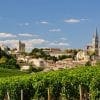
Uncover Saint Emilion's vibrant flavors and culinary gems with our expert guides. Plan an unforgettable trip now!
Read more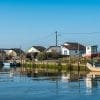
Uncover Arcachon vibrant flavors and culinary gems with our expert guides. Plan an unforgettable trip now!
Read more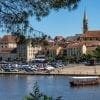
Uncover Bergerac's vibrant flavors and culinary gems with our expert guides. Plan an unforgettable trip now!
Read more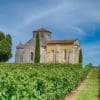
Uncover Cognac's vibrant flavors and culinary gems with our expert guides. Plan an unforgettable trip now!
Read more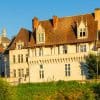
Uncover Périgueux's vibrant flavors and culinary gems with our expert guides. Plan an unforgettable trip now!
Read more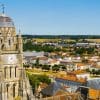
Uncover Saintes's vibrant flavors and culinary gems with our expert guides. Plan an unforgettable trip now!
Read moreIf you would like us to customize an exclusive luxury tour, contact us and let us know your travel plans. We offer luxury food and wine tours for private groups of a minimum two guests. In addition, all of our private, chauffeured tours are available year-round upon request.

